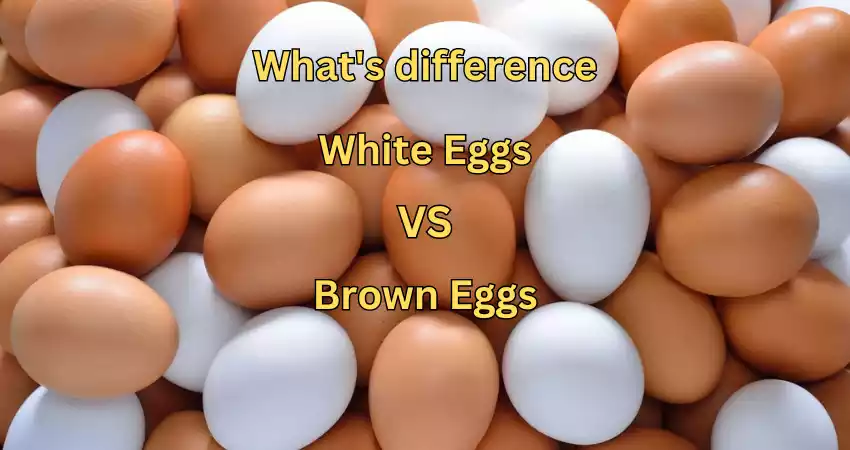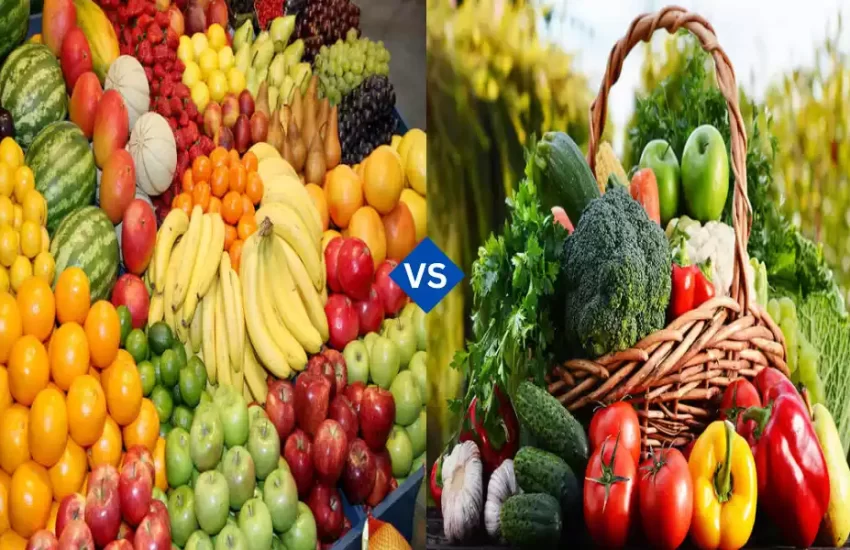Difference between White Eggs and Brown Eggs
Eggs, a staple in many diets worldwide, are often distinguished by a simple characteristic: the color of their shell. Predominantly found in hues of white and brown, these eggs have been at the center of various myths and misconceptions.
In addition to the color of the eggshell, there’s no distinction between eggs that are white and brown. The color of the eggshell is determined by what breed is used by the chicken. In general, white eggs are derived from feathered hens that have white feathers, and brown eggs are created by hens that have brown feathers. In terms of nutrition, eggs white and brown are the same unless the feed is specially formulated for eggs like Omega-3.
Physical Appearance: White Eggs and Brown Eggs
A chart to compare the physical appearance of white eggs and brown eggs.
| Feature | White Eggs | Brown Eggs |
|---|---|---|
| Shell Color | Pure white, with no pigmentation. | Brown, shades can vary from light to dark. |
| Shell Texture | Smooth with a consistent texture. | May have a slightly rougher texture. |
| Size | Size varies, but is generally consistent within each breed. | Similar to white eggs, size varies by breed. |
| Shape | Mostly oval, with one end slightly pointier than the other. | Similar to white eggs, the shape is largely breed-dependent. |
| Yolk Color | Yolk color varies based on the hen’s diet, not shell color. | Same as white eggs; yolk color is influenced by diet. |
| Shell Thickness | Slightly varies with the breed and age of the hen, not color. | Comparable to white eggs; influenced by hen’s age and breed. |
Taste and Culinary Use – White Eggs vs Brown Eggs
When it comes to taste and culinary use, the differences between white and brown eggs are largely a matter of perception rather than reality. Many people claim to notice a distinct taste difference, but scientifically, both white and brown eggs have nearly identical flavor profiles.

The taste of an egg is influenced more by the hen’s diet and living conditions than the color of its shell. In the kitchen, these eggs are interchangeable; both perform equally well in baking, frying, or boiling.
The choice between white and brown eggs often boils down to personal preference or cultural practices, rather than any significant difference in taste or cooking properties. Whether used in a classic omelet, a rich cake, or a simple boiled preparation, both white and brown eggs deliver the same delicious results.

Nutritional Comparison
For a nutritional comparison chart between white eggs and brown eggs, it’s important to note that the differences in nutritional value are minimal and largely influenced by the hen’s diet rather than the color of the eggshell.
Here’s how such a chart might look:
| Nutrient | White Eggs (Average) | Brown Eggs (Average) | Notes |
|---|---|---|---|
| Calories | ~70 kcal | ~70 kcal | Calories are generally the same. |
| Protein | ~6 g | ~6 g | Protein content is similar. |
| Fat | ~5 g | ~5 g | Total fat content is comparable. |
| Saturated Fat | ~1.5 g | ~1.5 g | Similar levels of saturated fats. |
| Cholesterol | ~185 mg | ~185 mg | Cholesterol levels are equivalent. |
| Vitamin D | Variable | Variable | Depends on the hen’s diet and exposure to sunlight. |
| Vitamin A | Slight variation | Slight variation | Similar, but can vary based on diet. |
| Iron | ~0.9 mg | ~0.9 mg | Iron content is typically the same. |
| Carbohydrates | 0 g | 0 g | Eggs do not contain carbohydrates. |
| Omega-3 Fatty Acids | Variable | Variable | Depends on the hen’s diet. |
This chart underscores that the nutritional differences between white and brown eggs are negligible. Factors such as the hen’s diet and environment play a more significant role in determining the nutritional content than the color of the eggshell.
Economic and Market Factors
In the realm of economics and market factors, the pricing and availability of white and brown eggs can vary significantly, often influenced by regional preferences and production costs. Generally, brown eggs tend to be more expensive than white eggs, but this price difference is not due to nutritional superiority.
Instead, it’s often because the hens that lay brown eggs are larger breeds and require more feed, which increases the cost of production. In some regions, brown eggs are perceived as healthier or more natural, which can drive up demand and price.
On the other hand, white eggs are more commonly produced and are often cheaper due to the lower cost of rearing smaller breeds of hens that lay these eggs. Supermarkets and grocery stores typically reflect these trends, with prices and availability aligning with consumer preferences and perceptions in a particular area.
Marketing strategies also play a role, as egg producers may highlight certain qualities of eggs (like shell color) to appeal to health-conscious or environmentally-aware consumers. Ultimately, the choice between white and brown eggs in the market is less about inherent differences and more about consumer beliefs and economic factors.
Environmental Impact and Farming Practices
The environmental impact and farming practices associated with egg production are crucial factors, transcending the mere color distinction between white and brown eggs. Regardless of shell color, the key environmental concerns include resource use, waste management, and the carbon footprint of poultry farms.
Practices such as free-range, organic, or caged hen farming significantly influence the quality and sustainability of egg production. Free-range and organic practices, which allow hens more natural living conditions and diets, often lead to a lower environmental impact but can be more resource-intensive.
Conversely, conventional caged farming, while more efficient in terms of space and feed, raises concerns about animal welfare and potential ecological ramifications due to higher concentrations of waste and chemicals. It’s important to note that these environmental and ethical considerations are independent of the egg’s shell color.
Both white and brown eggs can come from any of these farming practices. Thus, when considering the environmental impact of egg consumption, focusing on the farming method and practices is more relevant than the color of the eggshell.
Myths and Misconceptions
The world of eggs is riddled with myths and misconceptions, particularly when it comes to comparing white and brown eggs. One common myth is that brown eggs are inherently healthier or more natural than white eggs, which is not scientifically supported.
The nutritional content of an egg is influenced by the hen’s diet and living conditions, not the color of its shell. Another misconception is that brown eggs are fresher or more organic, but freshness depends on how the eggs are processed and stored, regardless of color.
Additionally, the belief that white eggs are bleached or artificially colored is false; the shell color is determined genetically by the breed of the hen. These misconceptions often influence consumer preferences and market trends, but it’s important to base egg choices on facts and personal dietary needs rather than color-based myths.
Consumer Choice and Preference
Consumer choice and preference in egg selection are influenced more by personal beliefs, cultural practices, and marketing than by any significant differences between white and brown eggs. Some people prefer brown eggs due to a perception of them being more natural or healthier, a belief shaped by cultural influences and marketing strategies rather than factual differences.
Others opt for white eggs, often driven by their lower cost or simply because they are more readily available in certain regions. Personal taste preferences, though largely subjective and not based on actual taste differences, also play a role in this decision. Additionally, environmental and ethical considerations, such as the preference for organic or free-range eggs, can influence consumer choices, transcending the eggshell color.
Why do chefs prefer brown eggs?
The preference for brown eggs among some chefs is often rooted in cultural and regional practices rather than any intrinsic quality difference. In certain areas, brown eggs have historically been perceived as more “natural” or “farm-fresh,” leading to a preference in culinary circles.
This perception might influence a chef’s choice, especially if they aim to project a certain image of quality or tradition in their cooking. However, scientifically, there is no difference in taste or nutritional value between brown and white eggs. The preference is more about personal or customer perception, shaped by cultural norms and marketing, rather than any objective superiority of brown eggs in cooking or baking.
Conclusion
The debate between white and brown eggs largely boils down to perception rather than substantial differences. Both types of eggs are nutritionally similar, with their taste and quality more influenced by the hen’s diet and living conditions than the color of the shell.
Economic factors, such as production costs and consumer demand, play a significant role in the pricing and availability of these eggs, while environmental impact is more closely tied to farming practices than to egg color.
The choice between white and brown eggs should be guided by informed personal preferences, considering factors like cost, ethical farming practices, and environmental concerns, rather than myths or misconceptions about health benefits or naturalness associated with shell color.


